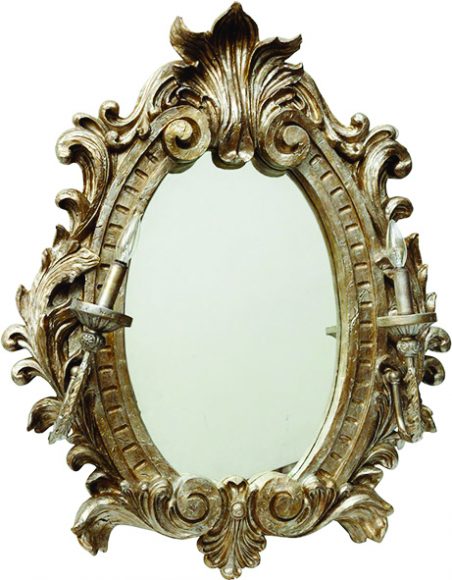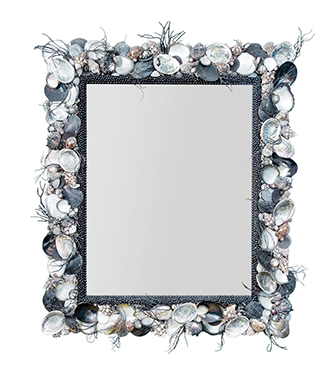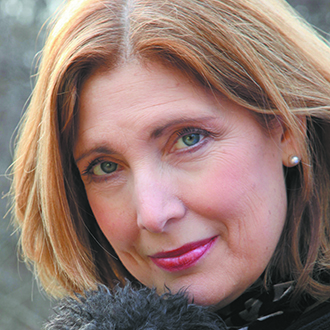People have been fascinated by their reflections for millennia. Narcissus – the mythic Greek hunter from whom we get the word “narcissism” – pined away for love of his own reflected loveliness, while wealthy Romans built fantastic mirrored rooms for their orgies.
Mirrors have long been erotic symbols in the history of Western art, from the paintings of Venus by Titian (“Venus with a Mirror”), Rubens (“Venus at Her Toilet”) and Velasquez (“The Rokeby Venus”) to the more modern “Girl Before a Mirror,” painted by Picasso. These works reflect sensual ideals of womanhood.
In 17th- and 18th-century Europe, a mirror was a mark of refinement, power, wealth and self-confidence. For French royalty and aristocracy in particular, ornate mirrors were a measure of status in society. Louis XIV set the example when he installed the spectacular Hall of Mirrors in Versailles. The Hall – where the peace treaty ending World War I was signed in June 1919 – has inspired many, from Peter Stuyvestant, the last director-general of New Netherland (New York), who created the first House of Mirrors in the New World for his entertainment; to E. L. James, who used the Hall of Mirrors as a honeymoon destination in her “Fifty Shades of Grey” trilogy.
As “Grey’s” Christian and Anastasia would no doubt concur, today’s hot mirror is the “selfie,” the Oxford Dictionary’s word of the year for 2013. This 21st-century digital mirror captures our culture’s obsession with the self, even for public servants like Pope Francis and President Barack Obama.
If a picture is worth a thousand words, then the selfie is worth a couple – “vanity” perhaps, or maybe “self-possession.”
“It takes a lot of confidence to post a selfie and like a mirror it is very revealing,” says Samantha Knapp, a former broadcast journalist who joined her family’s business, Tiger Lily’s Creative Design Studio in Greenwich, as creative director in 2009. “But mirrors in your home are not necessarily about vanity. “
Rather, if you want to spice up a space in your home, mirrors can be the answer. They are both functional and decorative. Knapp often suggests starting with a mirror when you decorate a room.
“The bigger the better. It shows you have ownership in a room.”
A mirror can make a statement in a room and be a focal point, she adds, “It’s a grounding force and can be as powerful as a rug or a sofa.”
As such, she says, mirrors can be a unifying, neutral accessory. “You can mix them up with other décor, like centering one with a pair of sconces.”
Knapp likes to add mirrors to a montage of photographs on a wall. “They bring the viewer into the collection. And I love them in the most unexpected places – the top of a table, in cabinetry and behind a bookshelf.”
A mirror can open up the space in a room, making it look twice the size or add some coziness.
“The right mirror in the right spot can change the way the size of a room feels,” Knapp says.
They also provide another opportunity to bring in a new texture, element or color in the room with materials like metal, snakeskin or upholstery. And you can shake it up with a different style mirror, she says. “If everything in a room is all square, bring in a circle.”
If you can’t find just the right mirror for a space in your home, Judy Gilmartin-Willsey – owner of Framings in Armonk and a member of the Gilmartin family of picture framers – recommends designing your own.
“Very often when people are looking for a mirror for a room, they may find something they like, but it may be the wrong size. So in lots of cases it works out to be much easier and more creative if we just make a mirror from scratch using custom materials.”
Gilmartin-Willsey designs huge mirrors that stand on the floor in a bedroom.
“Three-sided hinged mirror frames like a department store dressing room are a big part of our business,” she adds, “so you can see the rear view.”
Knapp says that the current trend in mirrors is to repurpose materials.
“People are using one-of-a kind, custom and refurbished materials that are surprising, like the yoke of an ox or a horse collar.”
Whatever the material, she adds, “If you want quality and the feel of luxury, I like a beveled edge.”
So does Kelly Leonard. In 2004, the digital marketing specialist picked up a mahogany-framed mirror with beveled edges and gold leaf trim at a public auction when Park Avenue’s Hotel Continental was undergoing renovations.
“I imagined the mirror hung in a public space perhaps near an elevator on a guest floor,” she says, “or maybe the lobby sitting area where it returned humanity’s gaze as guests and visitors came and went over the years – brides, grooms, tourists, business travelers, lonely hearts, hopeful new arrivals to the city.”
A historic mirror can be a conversation piece. Just ask the folks at Crabtree’s Kittle House and Inn in Chappaqua. Their mid-19th century bar with its patinated mirror was a gift from Ziegfeld Follies songbird and comedian Fanny Brice (the inspiration for “Funny Girl”) to Dutch Schultz. The looking glass spent many years at Schultz’s New York speakeasy before it found its home at the Kittle House in the 1970s.
For some, though, the mirror has an ironic face. What was the newspaper editor Horace Greeley thinking when he tipped his hat to his reflection in the dark wood-framed mirror as he left his home in Chappaqua for work at The New York Tribune? As New Castle Town Historian Gray Williams says the only problem with this tradition is that Greeley apparently didn’t pay much attention to what he saw in mirrors. He was a notoriously careless dresser. A friend commented that he always looked as if he had dressed in the dark.
Still, this kind of whimsical gesture was also typical of Greeley. He had a self-deprecating sense of humor.



